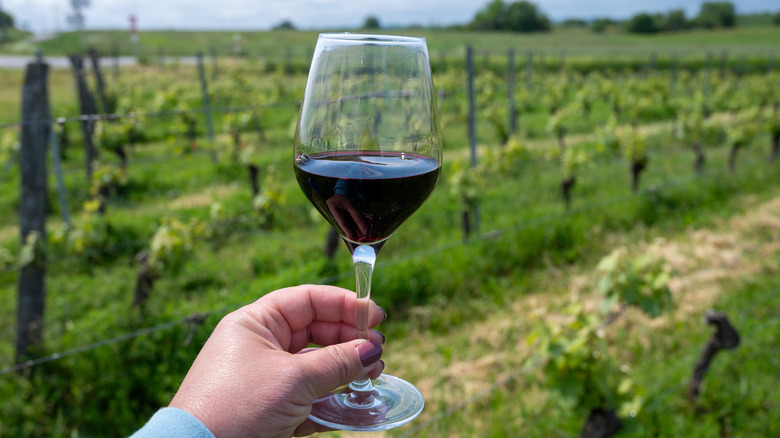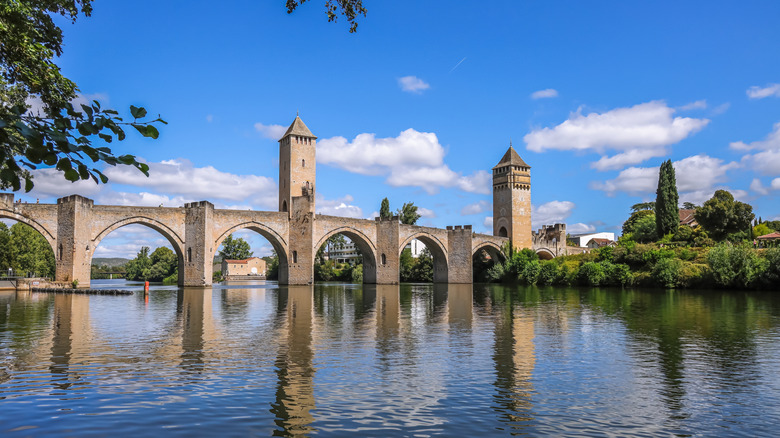This Wildly Underrated French Wine Region Has Fairytale Medieval Villages With Sublime Vineyards
The south of France is an amalgamation of rolling vineyards, coastal paradises, and artsy seaside resorts. Though visitors flock to cities boasting authentic charm and panoramic coastal views on the sun-kissed French Riviera to experience one of Europe's most chic holiday destinations, they may be disappointed by the thick crowds of tourists that descend on the region every summer. However, on the bends of the slow-moving Lot River, you'll find an undiscovered paradise: the enchanting, under-the-radar town of Cahors.
In the midst of rolling vineyards and dramatic limestone cliffs, here you'll find a place where time slows but history and drama mark every corner. Dating back to the Roman times, Cahors' golden age was during the Middle Ages when it was a bustling hub of trade and commerce. It's medieval core still remains, with cobblestone lanes and half-timbered houses still standing today, a testament to the hardiness and ingenuity of French medieval architects.
Though the nearby towns of historic and traditional Bordeaux and Burgundy may soak up the limelight, Cahors, at the heart of the Lot Valley, produces some of France's most robust and flavorsome wines – whilst boasting medieval villages that look like they're straight out of a storybook. It's here that wine, history, and culture meet, making Cahors a Francophile's dream.
Cahors, the heart of France's Malbec industry
Cahors has a landscape built for the vine, with Malbec grapes, which are typically associated with Argentina, thriving in the region's terroir. Malbec has come to be known as the "Black Wine of Cahors" thanks to its deep color and rich flavor. Historically, this regional Malbec was a favourite amongst kings,with Francis I properly establishing the region's wine trade and giving the Cahor grapes visibility. With a historical reputation that stretches back centuries, Cahors should be on any wine-lover's itinerary. The elevation of the valley creates microclimates that allow for distinct expressions of Malbec.
Not only is the Lot Valley scenic, but its vineyards will take visitors to the true artisanal roots of French winemaking. One of the most notable vineyards in the region is Chateau de Chambert; perched on the limestone plateau above the valley, Chambert is a fully organic winery with a winemaking practice dating back to the 10th century. Try their "Grand Vin," a full-bodied, well-aged Malbec with a unique regional flavor. Visitors should also check out Chateau du Cedre, another winery focused on Malbec with complex oak-aged reserve variations. Try the Grand Cedre to experience Cahors wine at its most polished.
Another winery that can't be missed while in Cahors is the Domaine Cosse Maisonneuve, a rising star that makes vibrant wines compared to the more hearty wines usually associated with the region. Chateau Les Croisille is another standout, a family-run winery on the limestone plateau that produces organic, fresh wines, including juicy reds and light rosés. Many of these wineries offer vineyard walks, cellar tours, or harvesting experiences. Some, like the Chateau de Hauterive, offer tours and gourmet food and wine pairings.
Medieval streets, straight from a fairytale
True sommeliers and wine fanatics will want to follow the "Route des Vignes de Cahors," a signposted wine walk along the Lot River that links wine cellars, villages, and vineyards with scenic viewpoints. Getting to Cahors is relatively simple from the neighboring city of Toulouse, with the nearest airport being Toulouse-Blagnac Airport. A train service runs from Toulouse Matabiau to Cahors Gare in less than two hours. You can also choose to drive from Toulouse by taking the A20 through some of France's most picturesque countryside.
There are many boutique hotels and rustic guesthouses to choose from in Cahors, with Le Chateau de Mercues being a luxurious choice. Situated in a 13th-century castle near the Lot River, a stay here is bound to be full of vineyard views, gourmet Michelin-starred dining, and vestiges of wine history. Hotel Terminus in the center of Cahors also offers vintage charm and comfortable accessibility.
Beyond this, the Lot Valley is dotted with stunning medieval villages that look like something from a fairytale. Among them is Saint-Cirq-Lapopie, one of "Les Plus Beaux Villages de France" — "the prettiest villages in France." Sitting on a cliff above the river, this is a construct of stone houses, flowering balconies and artisan boutiques. The undisputed star of Cahors itself is the Pont Valentre, a 14th-century fortified stone bridge with three towers that UNESCO has recognised as a World Heritage Site. This is the highlight of the Camino de Santiago Pilgrimage route, with lore stating that the builders allegedly made a pact with the devil to finish the construction of the bridge.
Cahors and the Lot Valley offer a tourist-free, fairytale side of France, much like the magical Saint-Paul-de-Vence with world-class wines, sunsets set against medieval streets, and a wine history that can truly be savored on every cobblestone sidewalk.


